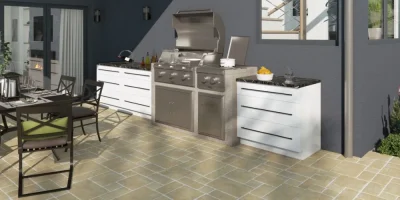Landscape design is a centuries-old art form that encompasses the meticulous planning, thoughtful design, and skillful execution of outdoor spaces. Its purpose is to craft an environment that is both visually appealing and cohesive. Whether it is a petite garden or a vast park, landscape design possesses the remarkable ability to metamorphose any outdoor area into a captivating extension of one’s living space.
Over time, a multitude of landscape design styles have emerged, each possessing distinct characteristics and features. Here we will go through several landscape design styles and offer tips on how to effortlessly achieve them in any outdoor setting.
How To Identify Your Client’s Landscape Style
As a design expert, it is important to be able to identify your client’s preferred landscape style. This will not only help you better understand their vision for their outdoor space, but it will also allow you to make informed choices when selecting plants, materials, and overall design elements.
One of the most popular landscape styles is the formal or traditional style. This type of design is characterized by its orderly and symmetrical layout. It often features geometric shapes, straight lines, and well-manicured lawns.
On the other hand, some clients may prefer a more informal or naturalistic landscape style. This type of design is inspired by nature and aims to create a more relaxed and organic feel. Informal landscapes often have curved pathways, meandering flower beds, and a variety of plant species.
Another landscape style to be aware of is the modern or contemporary style. This type of design is characterized by its clean lines, minimalistic elements, and use of technology.
In addition to these popular landscape styles, there are also various regional and cultural influences that can impact a client’s preferences. For example, clients from the Mediterranean may prefer a Mediterranean-inspired landscape with terracotta tiles, vibrant colors, and lush greenery. Clients from Japan may gravitate towards a Zen garden style with elements such as bamboo, rocks, and water features.
8 Most Common Landscape Design Styles
A well-designed landscape can significantly enhance the beauty and value of a property. However, there is no one-size-fits-all approach when it comes to landscape design. Each space is unique and requires a tailored approach that takes into consideration the surrounding environment, client’s preferences, and budget.
1. Tropical

Tropical landscape design is renowned for its lush foliage, vibrant hues, and exotic flora that transport you to an idyllic island paradise. Originating in the tropics, this design style has gained global attention for its welcoming and serene ambiance, making it a beloved choice worldwide.
Tropical landscape design showcases distinct features, characterized by the presence of large, vibrant plants such as palm trees, banana trees, and hibiscus. These plants not only infuse an exotic charm but also offer shade and privacy. An important aspect of this design style is the art of layering, which involves strategically planting smaller flora in front of larger ones, creating a captivating sense of depth and abundance.
2. English Garden
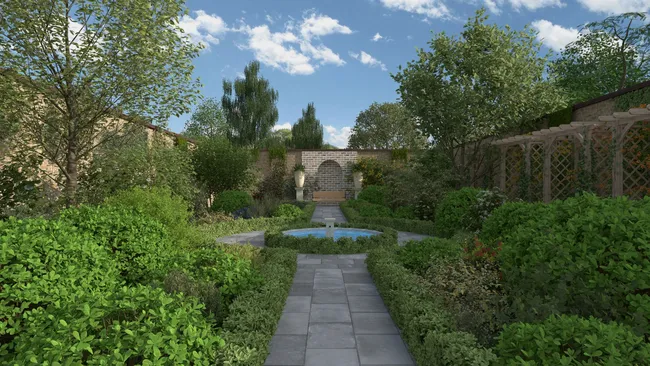
The English garden is characterized by its focus on creating a structured country garden. This is achieved through a combination of well-groomed lawns, defined pathways, and strategically placed shrubs and trees. The aim is to cultivate a sense of controlled chaos, where the garden appears to have grown naturally while every aspect has been carefully planned and designed.
It is also renowned for its diverse and abundant collection of flowers and greenery. It showcases a mix of perennials, annuals, shrubs, and trees, carefully selected to create a balanced composition. From roses and clematis to delphiniums and wisteria, an English garden offers a breathtaking array of colors and textures that evolve with the seasons, creating a truly stunning display.
3. Woodland

Woodland style, a timeless classic, has endured for centuries and remains beloved today. These landscapes embody a natural, organic ambiance, seamlessly blending with their surroundings. Inspired by the untamed beauty of forests, these gardens were once regarded as emblems of wealth and status.
Woodland landscapes continue to be a favored choice among homeowners seeking to create a serene and natural haven in their backyard. One defining aspect of these landscapes is the incorporation of native plants, which have successfully adapted to the local climate and soil conditions. This adaptability not only simplifies maintenance but also enhances their resilience against pests and diseases. By embracing native plants, woodland gardens necessitate less water, fertilizer, and pesticides, making them a more sustainable and environmentally-friendly option.
4. Prairie
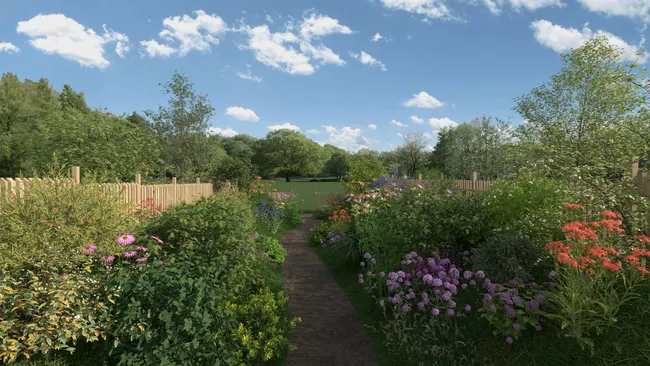
Prairie gardens can be seen as a modern interpretation of the vast, untouched grasslands that once dominated the Midwest. They are characterized by their use of native plants such as grasses, sedges, and wildflowers that were present before European settlement. By incorporating these native plants, prairie gardens not only create a sense of place but also support local ecosystems by providing food and shelter for native wildlife.
One key aspect of prairie style is the use of open, flowing spaces. This reflects the vastness of the original grasslands, creating a feeling of boundlessness and freedom. In contrast to more traditional formal gardens with tightly clipped hedges and manicured lawns, prairie gardens embrace a more natural aesthetic. This style celebrates the beauty of imperfection and embraces the dynamic changes that occur throughout the seasons.
5. Oriental/Japanese Garden
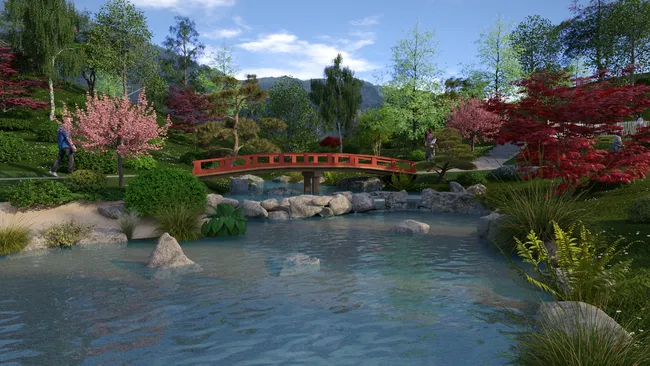
In Japanese culture, it is believed that there are four essential elements in a garden: rocks, water, plants, and ornaments. Each of these elements has a specific purpose and symbolism, and when combined in the right way, they create a balanced and harmonious landscape.
- Rocks are considered the backbone of a Japanese garden. They represent mountains or islands and are strategically placed to create a sense of depth and perspective.
- Water is another crucial element in a Japanese garden, representing life and vitality. It can take the form of a pond, stream, or waterfall, and its purpose is to add movement, sound, and reflection to the landscape.
- Plants, particularly evergreens and deciduous trees, play an essential role in creating a Japanese garden. They are carefully selected for their shape, color, and texture to add interest and contrast to the landscape.
- Ornaments such as lanterns, pagodas, and statues are used to add visual interest and symbolism to the garden. These man-made elements often have religious or spiritual significance in Japanese culture and are carefully placed within the landscape to create focal points.
6. Desert
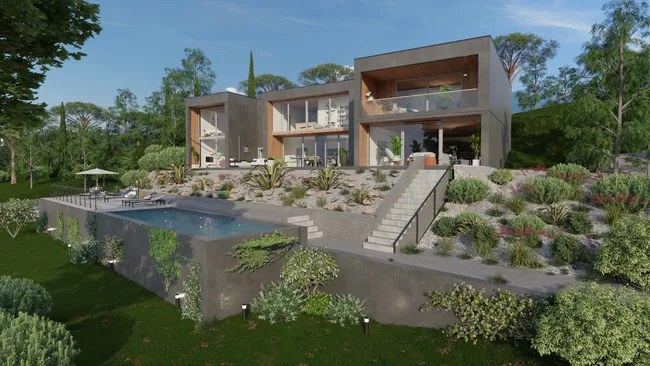
Desert gardens, also known as xeriscaping or arid landscaping, thrive in dry and drought-prone regions. These gardens showcase plants that have grown accustomed to the hot and arid conditions, making them low-maintenance and water-efficient. As climate change intensifies droughts, desert gardens are becoming increasingly popular in areas previously deemed unsuitable for such landscapes. Not only are these gardens visually appealing, but they also offer practicality and add a unique touch to any backyard or front yard.
Designing a thriving desert garden necessitates meticulous planning, taking into account the unique climate, soil conditions, and available resources. It’s important to recognize that desert gardens go beyond simply replacing traditional grass with drought-resistant plants. They require a comprehensive approach that integrates different elements to establish a sustainable and visually captivating landscape.
7. Native/Naturalized
Native and naturalized gardens, also known as “wildlife gardens”, are designed to mimic the natural environment and promote biodiversity. They focus on using native plants that have coevolved with local wildlife, fungi, and microbes, creating a mutually beneficial relationship between the plants and their environment.
Native plants are those that have evolved in a particular region over thousands of years. They are naturally used to the local climate, soil conditions, and wildlife, making them more resilient and better suited to thrive in their environment. This design style embraces the beauty of local flora and fauna, promoting a sense of place and connecting us to the land we live on.
8. Mediterranean
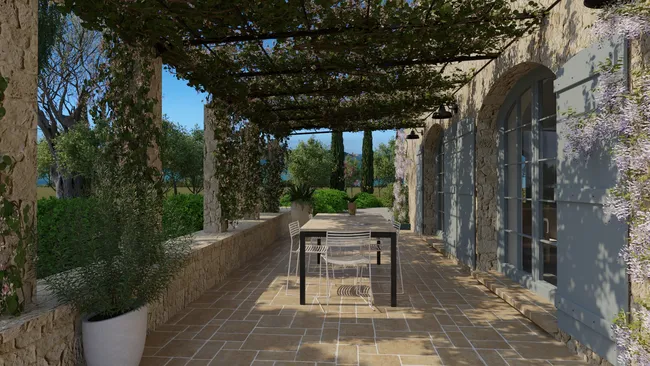
Mediterranean gardens originated in the countries surrounding the Mediterranean Sea, such as Italy, Greece, and Spain, where the climate is hot and dry. The unique characteristics of this region have influenced the design of these gardens, also making them sustainable in a limited-resource environment.
In a Mediterranean climate, the summer heat and aridity are significant challenges for plant growth. To address this, Mediterranean garden design incorporates elements that provide shade, such as pergolas and arbors, to protect plants from direct sunlight during the hottest hours of the day. These structures serve a functional purpose but also add architectural interest to the garden.
Limited rainfall is another important factor to consider in Mediterranean garden design. To combat this, watering techniques such as drip irrigation are commonly used to ensure that plants receive an appropriate amount of water without wasting it.
Informal vs. Formal Landscape Design Styles
Formal gardens are often associated with grand estates and palaces, where everything is perfectly symmetrical and in line. These gardens follow a strict geometric pattern, with straight lines and right angles dominating the design. They are also characterized by clean, manicured lawns and carefully pruned shrubs and trees. The use of hardscaping elements such as fountains, statues, and pathways is also common in formal gardens.
On the other hand, informal gardens have a more relaxed and natural feel to them. They are not bound by strict rules or geometric patterns, allowing for a more organic layout. Informal gardens tend to have curved pathways, irregularly shaped flower beds, and a mix of different plant species. The plants are often allowed to grow in a more natural way, without being constantly trimmed or pruned.
How Landscape Design Software Can Help Design Any Landscape Style
Landscape design is a meticulous and complex process that demands extensive planning, creativity, and meticulous attention to detail. It encompasses the integration of various elements, including plants, hardscape features, water elements, and outdoor structures, to fashion captivating outdoor spaces. Nevertheless, crafting a landscape design from the ground up can prove to be challenging, even for those well-versed in the art of design.
Landscape design software plays a crucial role in creating stunning outdoor spaces. Thanks to technological advancements, designing beautiful landscapes has never been easier. These software tools offer a wide array of features and functionalities that aid designers in crafting landscapes that are both visually appealing and functional. Cedreo, for example, is a versatile tool that allows designers to create landscapes in various styles, ranging from traditional to modern and everything in between.



